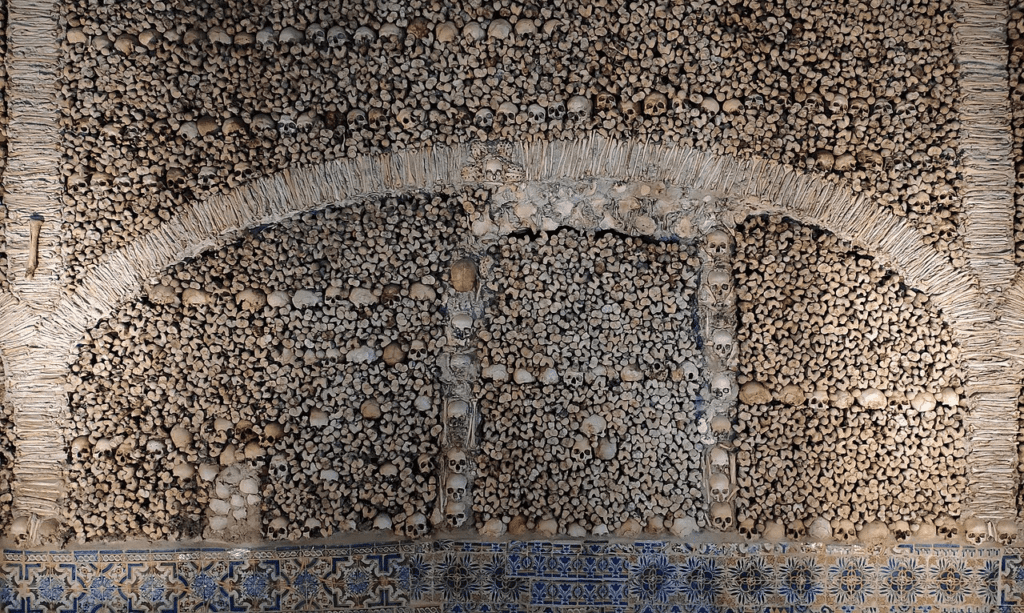
The Capela dos Ossos (English: Chapel of Bones) is one of the best-known monuments in Évora, Portugal. It is a small interior chapel located next to the entrance of the Church of St. Francis. The Chapel gets its name because the interior walls are covered and decorated with human skulls and bones.
Origin
The Capela dos Ossos was built by Franciscan monks. An estimated 5,000 corpses were exhumed to decorate the walls of the chapel. The bones, which came from ordinary people who were buried in Évora’s medieval cemeteries, were arranged by the Franciscans in a variety of patterns.
- “Portugal’s Chapel of Bones”. Atlas Obscura. Retrieved 2020-02-22.
- “Vídeos « Igreja de São Francisco | Évora | Portugal”. igrejadesaofrancisco.pt (in European Portuguese). Retrieved 2020-02-22.
Description
The chapel is formed by three spans 18.7 m (61.4 ft) long and 11 m (36 ft) wide. Light enters through three small openings on the left. Its walls and eight pillars are decorated in carefully arranged bones and skulls held together by cement. The ceiling is made of white painted brick and is painted with death motifs. The number of skeletons of friars was calculated to be about 5,000, coming from the cemeteries that were situated inside several dozen churches. Some of these skulls have been scribbled with graffiti. Two desiccated corpses, one of which is a child, are in glass display cases. And at the roof of chapel, the phrase “Melior est die mortis die nativitatis (Better is the day of death than the day of birth)” (Ecclesiastes, 7, 1) from Vulgate is written.
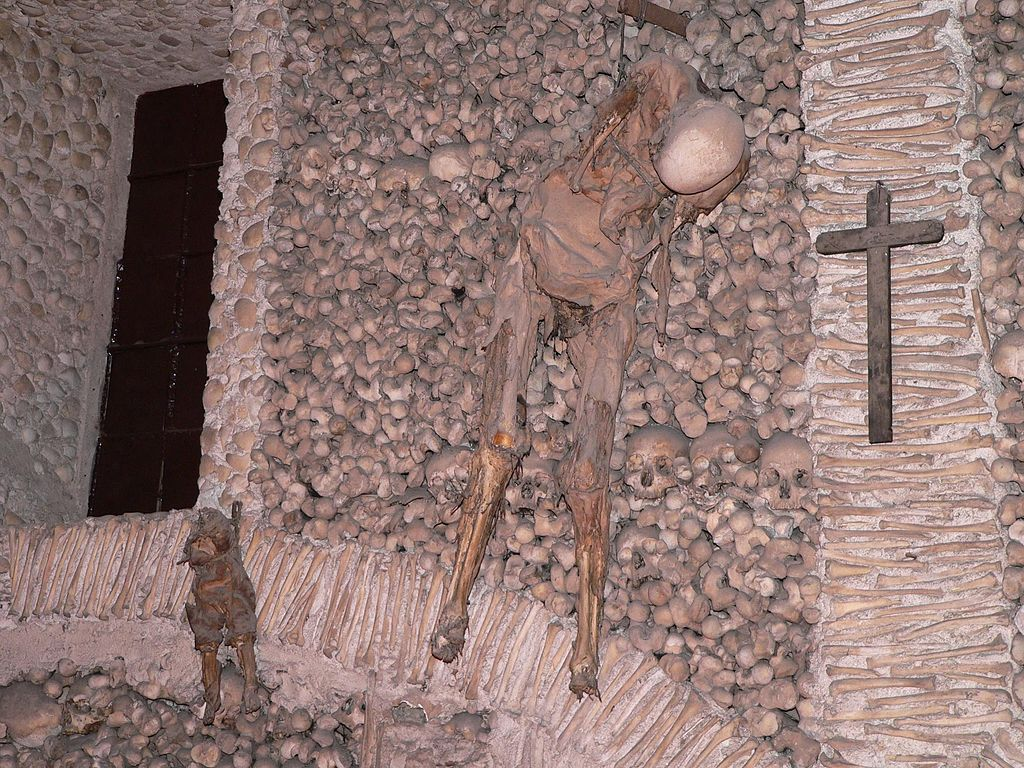
Poem
Inside the Capela dos Ossos a poem about the need to reflect on one’s existence hangs in an old wooden frame on one of the pillars. It is attributed to Fr. António da Ascenção Teles, parish priest of the village of São Pedro (wherein the Church of Saint Francis with its Capela dos Ossos was erected) from 1845 to 1848.
| Aonde vais, caminhante, acelerado? Pára…não prossigas mais avante; Negócio, não tens mais importante, Do que este, à tua vista apresentado. Recorda quantos desta vida têm passado, Reflecte em que terás fim semelhante, Que para meditar causa é bastante Terem todos mais nisto parado. Pondera, que influido d’essa sorte, Entre negociações do mundo tantas, Tão pouco consideras na morte; Porém, se os olhos aqui levantas, Pára…porque em negócio deste porte, Quanto mais tu parares, mais adiantas. | Where are you going in such a hurry, traveler? Pause…do not advance your travel. You have no greater concern, than business Than this one: that on which you focus your sight. Recall how many have passed from this world, Reflect on your similar end. There is good reason to do so; If only all did the same. Ponder, you so influenced by fate, Among the many concerns of the world, So little do you reflect on death. If by chance you glance at this place, Stop … for the sake of your journey, The longer you pause, the further on your journey you will be. |
| —Padre António da Ascenção | —Padre António da Ascenção, translated by Carlos A. Martins |
Images
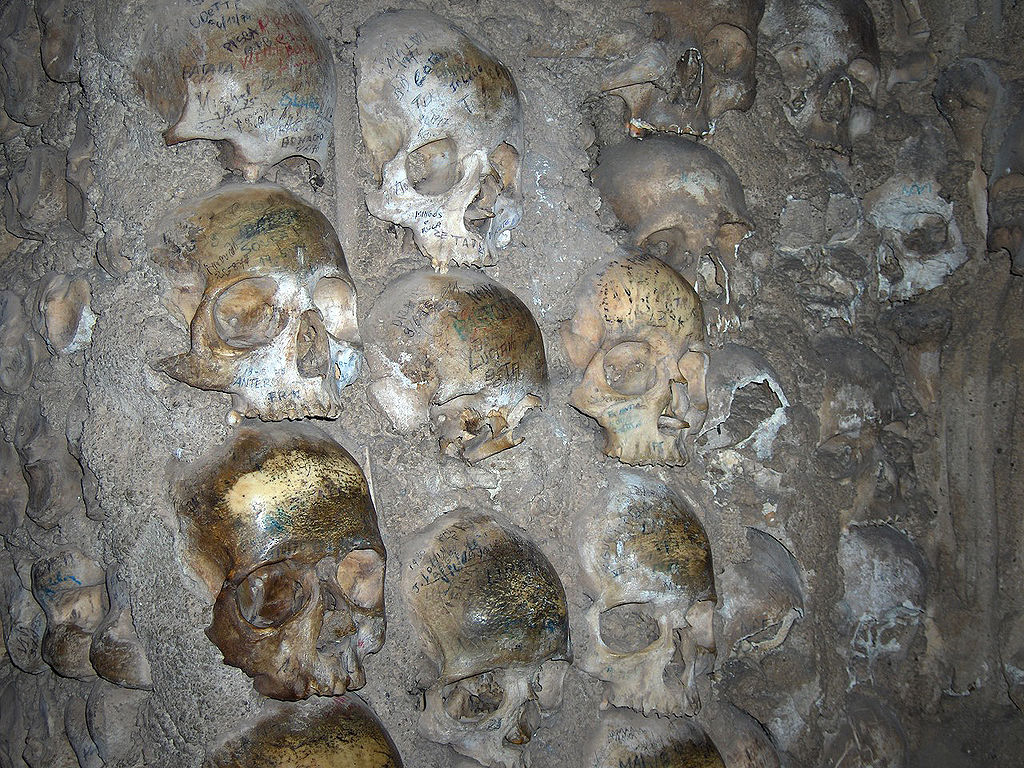
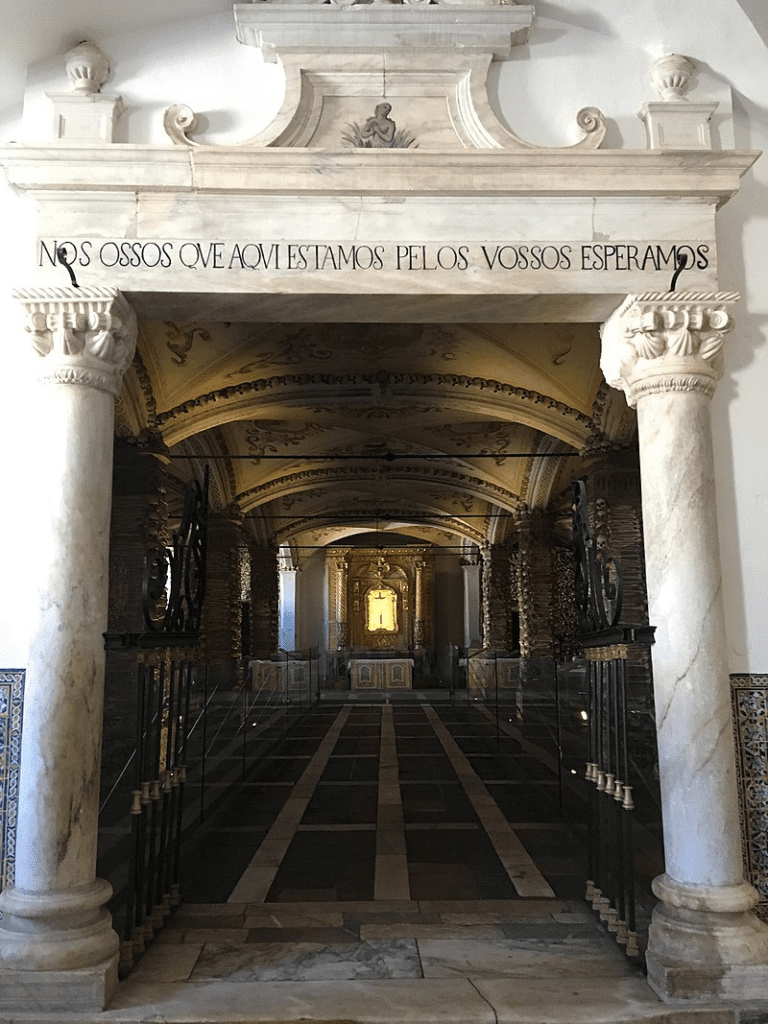
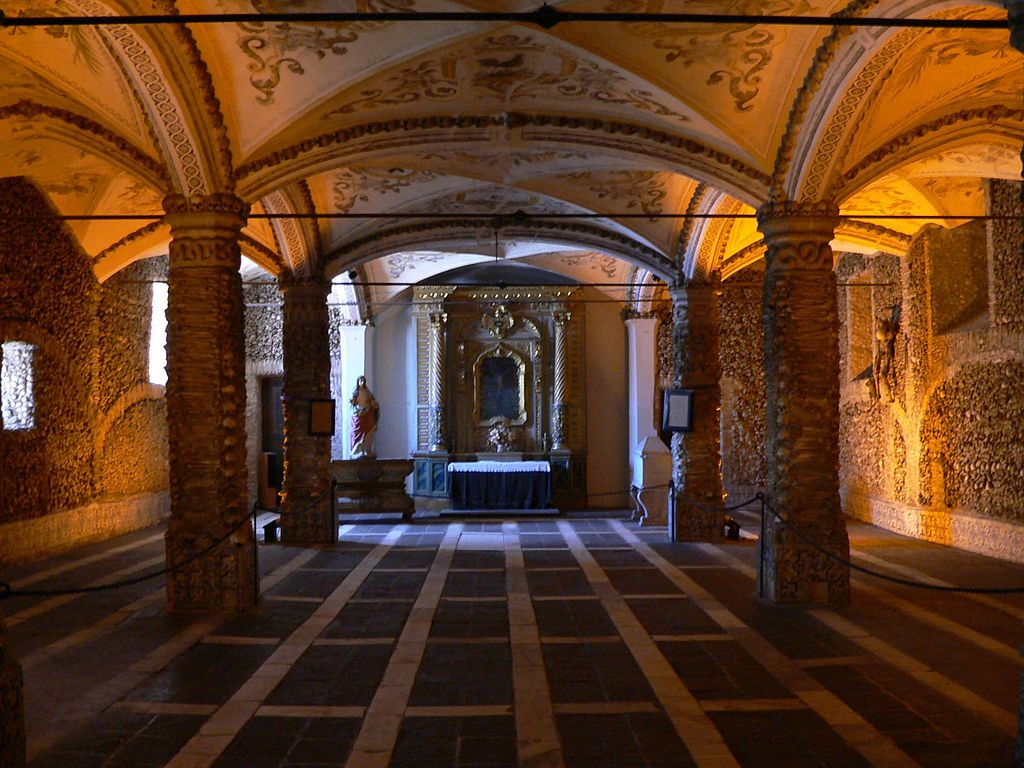
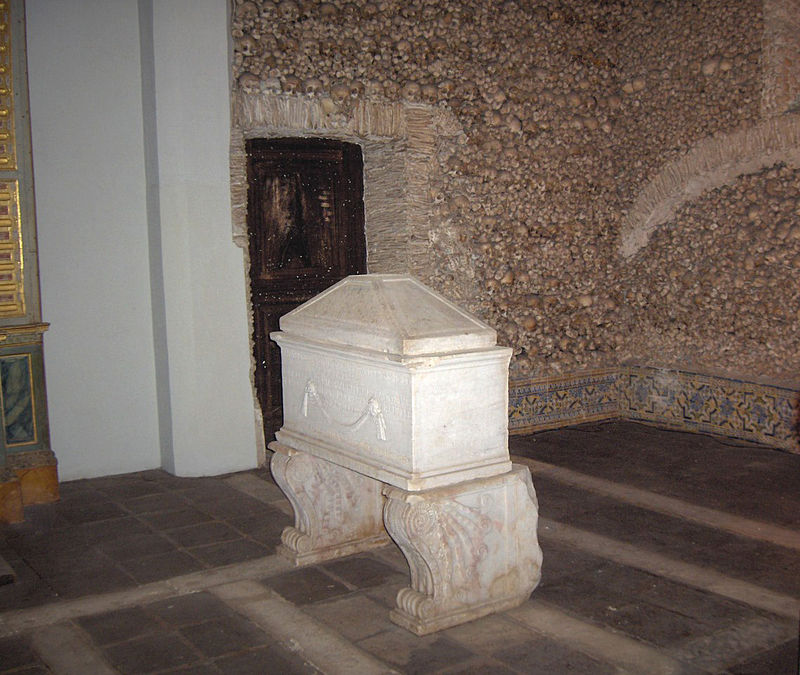

See also
- Capuchin Crypt
- Capuchin catacombs of Palermo
- Memento Mori
- Sedlec Ossuary
- Skull Tower
- Skull Chapel, Czermna
References
- “Portugal’s Chapel of Bones”. Atlas Obscura. Retrieved 2020-02-22.
- “Vídeos « Igreja de São Francisco | Évora | Portugal”. igrejadesaofrancisco.pt (in European Portuguese). Retrieved 2020-02-22.
Wikimedia Commons has media related to Igreja de São Francisco (Évora).
- Turner, J., Grove Dictionary of Art, MacMillan, 1996 – ISBN 0-19-517068-7.
- The Rough Guide to Portugal – 11th edition March 2005 – ISBN 1-84353-438-X.
- Rentes de Carvalho, J., Portugal – De Arbeiderspers, Amsterdam, 1999 – ISBN 90-295-3466-4.

Leave a Reply